
Bohdan Zynoviy Mykhailovych Khmelnytsky was a Ruthenian nobleman and military commander of Ukrainian Cossacks as Hetman of the Zaporozhian Host, which was then under the suzerainty of the Polish–Lithuanian Commonwealth. He led an uprising against the Commonwealth and its magnates (1648–1654) that resulted in the creation of an independent Cossack state in Ukraine. In 1654, he concluded the Treaty of Pereiaslav with the Russian Tsar and allied the Cossack Hetmanate with Tsardom of Russia, thus placing central Ukraine under Russian protection. During the uprising the Cossacks led a massacre of thousands of Poles and Jews during 1648–1649 as one of the most traumatic events in the history of the Jews in Ukraine and Ukrainian nationalism.

The Deluge was a series of mid-17th-century military campaigns in the Polish–Lithuanian Commonwealth. In a wider sense, it applies to the period between the Khmelnytsky Uprising of 1648 and the Truce of Andrusovo in 1667, comprising the Polish theatres of the Russo-Polish and Second Northern Wars. In a stricter sense, the term refers to the Swedish invasion and occupation of the Commonwealth as a theatre of the Second Northern War (1655–1660) only; in Poland and Lithuania this period is called the Swedish Deluge, or less commonly the Russo–Swedish Deluge due to the simultaneous Russo-Polish War. The term "deluge" was popularized by Henryk Sienkiewicz in his novel The Deluge (1886).

The Second Northern War (1655–60), was fought between Sweden and its adversaries the Polish–Lithuanian Commonwealth (1655–60), the Tsardom of Russia (1656–58), Brandenburg-Prussia (1657–60), the Habsburg monarchy (1657–60) and Denmark–Norway. The Dutch Republic waged an informal trade war against Sweden and seized the colony of New Sweden in 1655, but was not a recognized part of the Polish–Danish alliance.

The Pereiaslav Agreement or Pereyaslav Agreement was an official meeting that convened for a ceremonial pledge of allegiance by Cossacks to the Russian tsar, then Alexis, in the town of Pereiaslav in central Ukraine, in January 1654. The ceremony took place concurrently with ongoing negotiations that started on the initiative of Hetman Bohdan Khmelnytsky to address the issue of the Cossack Hetmanate with the ongoing Khmelnytsky Uprising against the Polish–Lithuanian Commonwealth and which concluded the Treaty of Pereiaslav. The treaty itself was finalized in Moscow in April 1654.
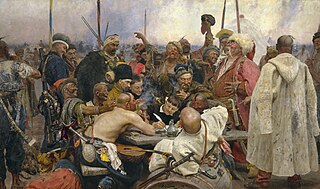
The Zaporozhian Cossacks, Zaporozhian Cossack Army, Zaporozhian Host, or simply Zaporozhians were Cossacks who lived beyond the Dnieper Rapids. Along with Registered Cossacks and Sloboda Cossacks, Zaporozhian Cossacks played an important role in the history of Ukraine and the ethnogenesis of Ukrainians.

Ivan Stepanovych Mazepa was a Ukrainian military, political, and civic leader who served as the Hetman of the Zaporizhian Host and the Left-bank Ukraine in 1687–1708. The historical events of Mazepa's life have inspired many literary, artistic and musical works. He was famous as a patron of the arts.

Left-bank Ukraine is a historic name of the part of Ukraine on the left (east) bank of the Dnieper River, comprising the modern-day oblasts of Chernihiv, Poltava and Sumy as well as the eastern parts of Kyiv and Cherkasy.

The Khmelnytsky Uprising, also known as the Cossack–Polish War, or the Khmelnytsky insurrection, was a Cossack rebellion that took place between 1648 and 1657 in the eastern territories of the Polish–Lithuanian Commonwealth, which led to the creation of a Cossack Hetmanate in Ukraine. Under the command of hetman Bohdan Khmelnytsky, the Zaporozhian Cossacks, allied with the Crimean Tatars and local Ukrainian peasantry, fought against Polish domination and Commonwealth's forces. The insurgency was accompanied by mass atrocities committed by Cossacks against the civilian population, especially against the Roman Catholic and Ruthenian Uniate clergy and the Jews, as well as savage reprisals by Jeremi Wiśniowiecki, the voivode of the Ruthenian Voivodeship.

Hetman of Zaporizhian Cossacks is a historical term that has multiple meanings.
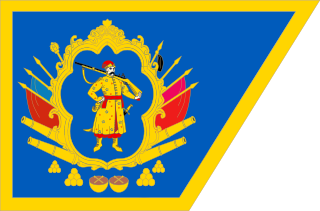
The Cossack Hetmanate, officially the Zaporozhian Host or Army of Zaporozhia, is a historical term for the 17th–18th centuries Ukrainian Cossack state located in central Ukraine. It existed between 1649 and 1764, although its administrative-judicial system persisted until 1782.
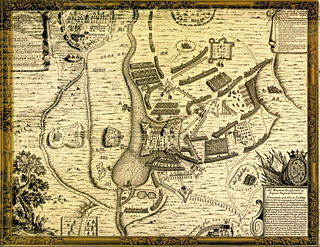
The Russo-Polish War of 1654–1667, also called the Thirteen Years' War, Muscovite War of 1654-1667 and the First Northern War, was a major conflict between the Tsardom of Russia and the Polish–Lithuanian Commonwealth. Between 1655 and 1660, the Swedish invasion was also fought in the Polish–Lithuanian Commonwealth and so the period became known in Poland as "The Deluge" or Swedish Deluge.

The Ruin is a historical term introduced by the Cossack chronicle writer Samiilo Velychko (1670–1728) for the political situation in Ukrainian history during the second half of the 17th century.
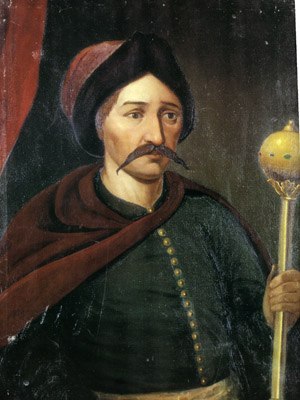
Pavlo Teteria was Hetman of Right-bank Ukraine (1663–1665). His real name is Pavlo Morzhkovsky. Before his hetmancy he served in a number of high positions under Bohdan Khmelnytsky, and Ivan Vyhovsky.

The Wild Fields is a historical term used in the Polish–Lithuanian documents of the 16th to 18th centuries to refer to the Pontic steppe in the territory of present-day Eastern and Southern Ukraine and Western Russia, north of the Black Sea and Azov Sea. It was the traditional name for the Black Sea steppes in the 16th and 17th centuries. In a narrow sense, it is the historical name for the demarcated and sparsely populated Black Sea steppes between the middle and lower reaches of the Dniester in the west, the lower reaches of the Don and the Siverskyi Donets in the east, from the left tributary of the Dnipro — Samara, and the upper reaches of the Southern Bug — Syniukha and Ingul in the north, to the Black and Azov Seas and Crimea in the south.

The Cossack uprisings were a series of military conflicts between the Cossacks and the states claiming dominion over the territories they lived in, namely the Polish–Lithuanian Commonwealth and Russian Empire during the 16th, 17th, and 18th centuries. The conflict resulted from both states' attempts to exert control over the independent-minded Cossacks. While the early uprisings were against the Commonwealth, as the Russian Empire gained increasing and then total control over the Ruthenian (Ukrainian) lands where the Cossacks lived, the target of Cossacks uprisings changed as well.
The Pereyaslav Articles were concluded on 27 October 1659 between Yurii Khmelnytsky, the son of Bohdan Khmelnytsky, and the Russian tsar. The treaty drastically limited the Cossack autonomy. The treaty was an aftermath of the Treaty of Hadiach on 16 September 1658 between the Cossacks and the Polish–Lithuanian Commonwealth, which granted many privileges to Cossacks and thus threatened Russian influence over them. The articles imposed severe restrictions on Cossack Hetmanate autonomy.

The Hetman of the Zaporizhian Host was the head of state of the Cossack Hetmanate. The office was abolished by the Russian government in 1764.

The Battle of Zhvanets or the siege of Zhvanets was fought between the Cossack Hetmanate and Crimean Khanate against the Polish–Lithuanian Commonwealth as a part of the Khmelnytsky Uprising. Near the site of the present-day village of Zhvanets in Ukraine, a forces of the Zaporozhian Cossacks and Crimean Tatars under the command of Hetman Bohdan Khmelnytsky and Khan İslâm III Giray defeated and successfully besieged the Polish–Lithuanian Commonwealth’s forces under the command of the Polish King John II Casimir. The siege ended with a unsatisfactory outcome and the Poles and Lithuanians agreed to renew the Treaty of Zboriv which was signed in 18 August 1649.
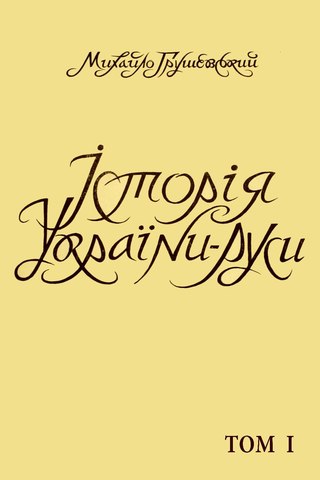
History of Ukraine-Rusʹ is a monumental 10-volume monographic series by Mykhailo Hrushevsky. The work is generally considered a magnum opus and a foundation of the contemporary history of Ukraine. It covers the period from ancient times to the second half of the 17th century. It was written between 1895 and 1933.















